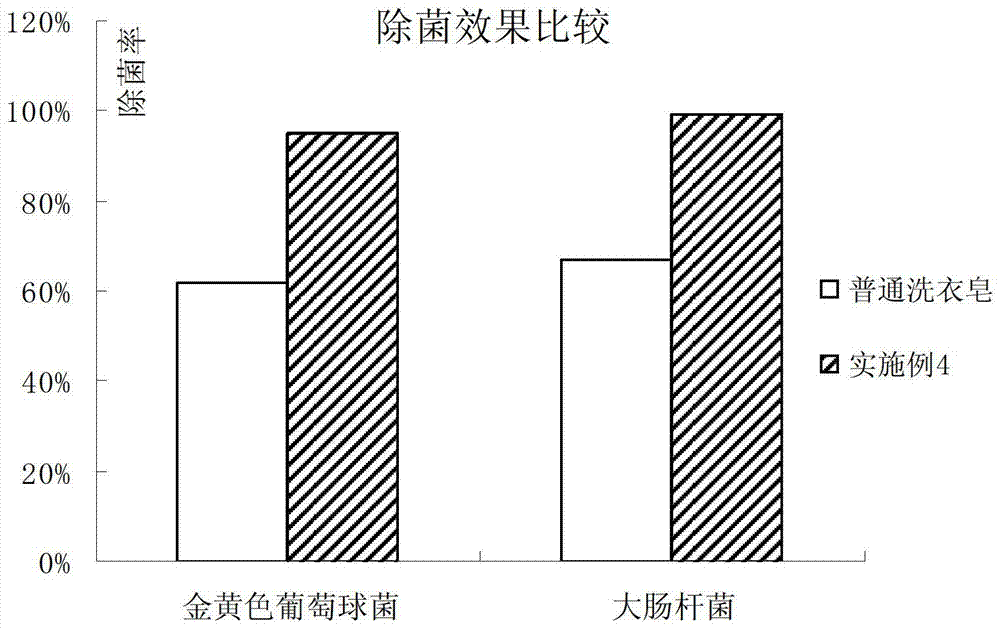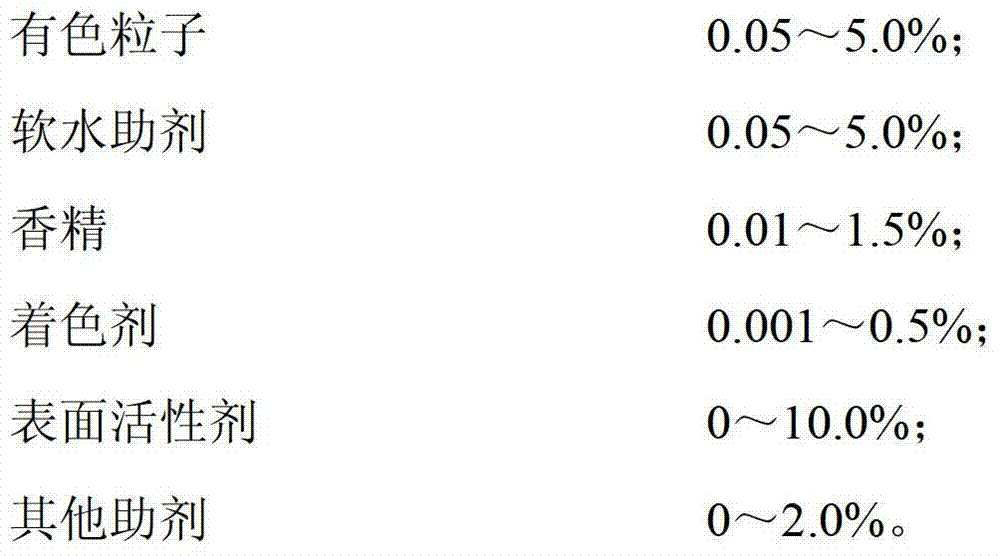Washing soap with functional colored granules and production method thereof
A technology of colored particles and laundry soap, which is applied in the direction of chemical instruments and methods, detergent compositions, soap detergent compositions, etc., can solve the problems that ordinary particles cannot be used, and the washing effect of laundry soap with visual aesthetics is single, and the application can be improved. Appearance, increased washing performance, soap scum reduction effect
- Summary
- Abstract
- Description
- Claims
- Application Information
AI Technical Summary
Problems solved by technology
Method used
Image
Examples
Embodiment 1
[0038] The preparation of colored particles is made of the following substances by weight percentage:
[0039] Soap grains 16.0%; bentonite 50.5%; microcrystalline cellulose 18.0%; pigment blue 270.5%; triclocarban 15.0%.
[0040] The soap grains are soap powder made of any common soap grains, bentonite is selected as the inorganic additive, microcrystalline cellulose is selected as the binder, pigment blue 27 is selected as the colorant, and the fungicide triclocarban is selected as the functional additive.
[0041] The manufacturing process is as follows:
[0042] Turn on the mixer, add a certain amount of process water to the batching pot, and add 16.0% soap grains, 50.5% bentonite, 18.0% microcrystalline cellulose, 0.5% pigment blue 27, and 15.0% triclocarban in proportion Stir evenly in the batching pot to form a slurry, which is formed by fluidized bed or vacuum extrusion or other methods to obtain the required blue particles for later use.
Embodiment 2
[0044] The preparation of colored particles is made of the following substances by weight percentage:
[0045] Soap grains 12.0%; bentonite 59.5%; dextrin 16.0%; acid scarlet G 0.5%; triclocarban 12.0%.
[0046] The soap grains are soap powder made of any common soap grains, bentonite is selected as the inorganic additive, dextrin is selected as the binder, acid scarlet G is selected as the colorant, and the fungicide triclocarban is selected as the functional additive.
[0047] The manufacturing process is as follows:
[0048] Turn on the mixer, add a certain amount of process water into the batching pot, and add 12.0% soap grains, 59.5% bentonite, 16.0% dextrin, 0.5% acid scarlet G, and 12.0% triclocarban into the batching pot in proportion Stir in medium to make a slurry evenly, and form by fluidized bed or vacuum extrusion or other methods to obtain the required red particles for later use.
Embodiment 3
[0050] The preparation of colored particles is made of the following substances by weight percentage:
[0051] Soap grain 8.0%; silicon dioxide 61.4%; microcrystalline cellulose 16.0%; AEO99.0%; enzyme preparation 5.0%; pigment green 70.6%;
[0052] Soap powder is made of any common soap granules, silica is used as an inorganic additive, microcrystalline cellulose is used as a binder, Pigment Green 7 is used as a colorant, and enzyme preparation (protease) and AEO9 are used as functional additives.
[0053] The manufacturing process is as follows:
[0054] Turn on the mixer, add a certain amount of process water to the batching pot, and mix 8.0% soap grains, 61.4% silicon dioxide, 16.0% microcrystalline cellulose, 0.6% pigment green 7, 9.0% AEO9, 5.0% % of the enzyme preparation is added to the batching pot and stirred evenly to form a slurry, which is formed by fluidized bed or vacuum extrusion or other methods to obtain the required green particles for later use.
PUM
 Login to View More
Login to View More Abstract
Description
Claims
Application Information
 Login to View More
Login to View More - R&D
- Intellectual Property
- Life Sciences
- Materials
- Tech Scout
- Unparalleled Data Quality
- Higher Quality Content
- 60% Fewer Hallucinations
Browse by: Latest US Patents, China's latest patents, Technical Efficacy Thesaurus, Application Domain, Technology Topic, Popular Technical Reports.
© 2025 PatSnap. All rights reserved.Legal|Privacy policy|Modern Slavery Act Transparency Statement|Sitemap|About US| Contact US: help@patsnap.com



